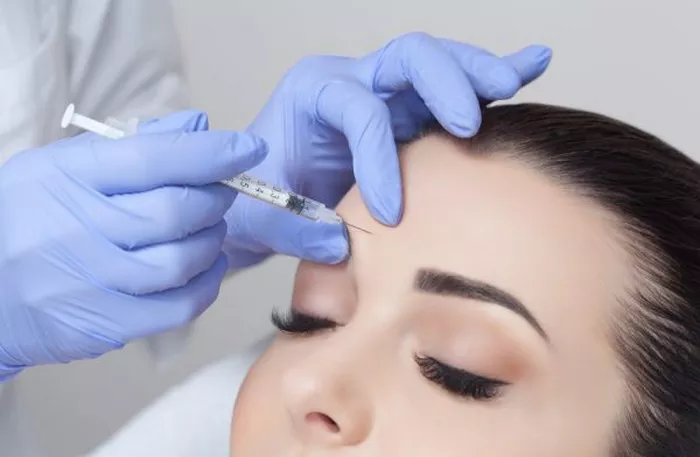Deep wrinkles on the face are a common sign of aging and can be caused by factors such as sun exposure, smoking, and genetics. While deep wrinkles can be difficult to treat, there are several treatment options available that can help improve the appearance of deep wrinkles. In this article, we will explore the causes of deep wrinkles on the face and the treatment options available to fix them.
Causes of Deep Wrinkles on Face
Sun Exposure: Exposure to the sun’s UV rays can cause deep wrinkles on the face. UV rays can break down collagen and elastin, which are essential for maintaining the skin’s elasticity.
Smoking: Smoking can cause deep wrinkles on the face by reducing blood flow to the skin and causing damage to collagen and elastin.
Genetics: Genetics can play a role in the development of deep wrinkles on the face. Some people are more prone to developing wrinkles due to their genetic makeup.
Aging: As we age, our skin naturally loses collagen and elastin, which can cause deep wrinkles to form.
Treatment Options to Fix Deep Wrinkles on Face
Retinoids: Retinoids are a type of vitamin A that can help improve the appearance of deep wrinkles on the face. Retinoids work by increasing collagen production and reducing the breakdown of collagen and elastin.
Chemical Peels: Chemical peels involve applying a chemical solution to the skin to remove the top layer of dead skin cells. This can help improve the appearance of deep wrinkles on the face.
Dermal Fillers: Dermal fillers are injectable treatments that can help fill in deep wrinkles on the face. Dermal fillers work by adding volume to the skin, which can help reduce the appearance of wrinkles.
Laser Resurfacing: Laser resurfacing involves using a laser to remove the top layer of skin, which can help improve the appearance of deep wrinkles on the face.
Botox: Botox is a type of injectable treatment that can help reduce the appearance of deep wrinkles on the face. Botox works by relaxing the muscles that cause wrinkles to form.
Facelift: A facelift is a surgical procedure that can help improve the appearance of deep wrinkles on the face. During a facelift, excess skin is removed and the remaining skin is tightened to reduce the appearance of wrinkles.
Prevention of Deep Wrinkles on Face
Sun Protection: Protecting your skin from the sun’s UV rays can help prevent deep wrinkles from forming on the face. Wear a hat and use a sunscreen with at least SPF 30 when you are outside.
Quit Smoking: Quitting smoking can help prevent deep wrinkles from forming on the face by improving blood flow to the skin and reducing damage to collagen and elastin.
Healthy Diet: Eating a healthy diet can help prevent deep wrinkles from forming on the face. Eat plenty of fruits, vegetables, and lean protein, and avoid processed foods and sugary drinks.
Moisturize: Keeping your skin moisturized can help prevent deep wrinkles from forming on the face. Use a moisturizer that is appropriate for your skin type and apply it regularly.
Conclusion
Deep wrinkles on the face can be caused by factors such as sun exposure, smoking, genetics, and aging. While deep wrinkles can be difficult to treat, there are several treatment options available that can help improve the appearance of deep wrinkles. Treatment options include retinoids, chemical peels, dermal fillers, laser resurfacing, Botox, and facelifts. To prevent deep wrinkles from forming on the face, it is important to protect your skin from the sun, quit smoking, eat a healthy diet, and keep your skin moisturized. By understanding the causes of deep wrinkles on the face and the treatment options available, you can make an informed decision about how to fix deep wrinkles on your face and achieve a more youthful-looking complexion.
FAQs
1. Can you repair deep wrinkles?
While it’s challenging to completely “repair” deep wrinkles, various treatments can help improve their appearance. These may include topical retinoids, which can stimulate collagen production and increase skin thickness over time, as well as cosmetic procedures like dermal fillers, laser resurfacing, chemical peels, and microneedling. These treatments can help smooth out deep lines and creases, although results may vary depending on factors such as skin type, severity of wrinkles, and individual response to treatment.
2. How do you get rid of deep line wrinkles?
Getting rid of deep line wrinkles typically involves a combination of skincare products and professional treatments. Daily use of sunscreen, moisturizers, and products containing retinoids or peptides can help improve skin texture and reduce the appearance of wrinkles over time. For more significant or stubborn wrinkles, cosmetic procedures like injectable fillers, Botox injections, laser therapy, or chemical peels may be recommended to soften lines and restore a smoother complexion.
3. What is the best treatment for deep facial wrinkles?
The best treatment for deep facial wrinkles depends on factors such as the cause of the wrinkles, skin type, and individual goals. Injectable fillers like hyaluronic acid or collagen can temporarily plump up deep lines and creases, while Botox injections can relax underlying muscles to soften wrinkles caused by facial expressions. Laser resurfacing, chemical peels, and microneedling are also effective options for improving skin texture and reducing the appearance of deep wrinkles.
4. Is there anything to fill in deep wrinkles?
Yes, there are several options to fill in deep wrinkles and restore volume to the skin. Injectable dermal fillers containing hyaluronic acid, calcium hydroxylapatite, or poly-L-lactic acid can be injected into deep lines and creases to add volume and smooth out wrinkles. These fillers can provide immediate results with minimal downtime and typically last for several months to a year, depending on the specific product used. Additionally, fat grafting or autologous fat transfer involves harvesting fat from one area of the body and injecting it into deep wrinkles to create a natural-looking, long-lasting improvement in skin texture and volume.


